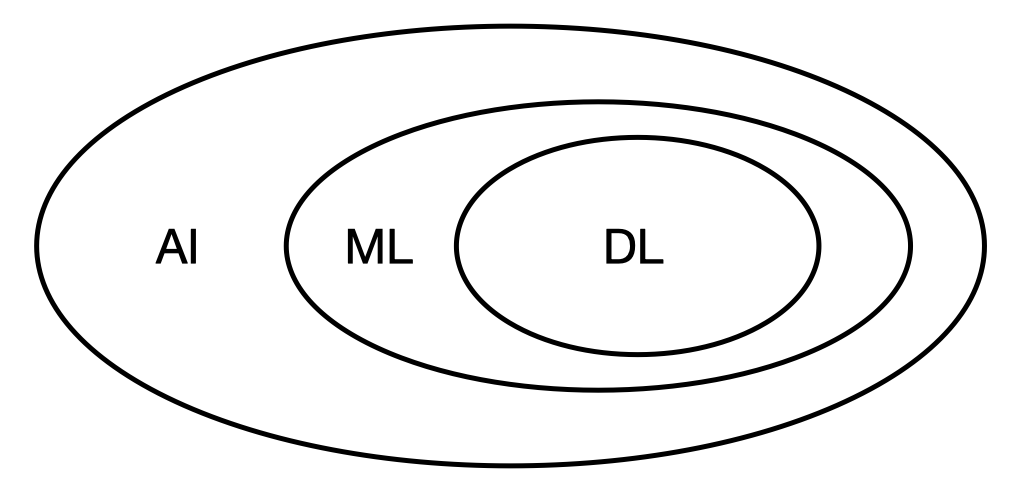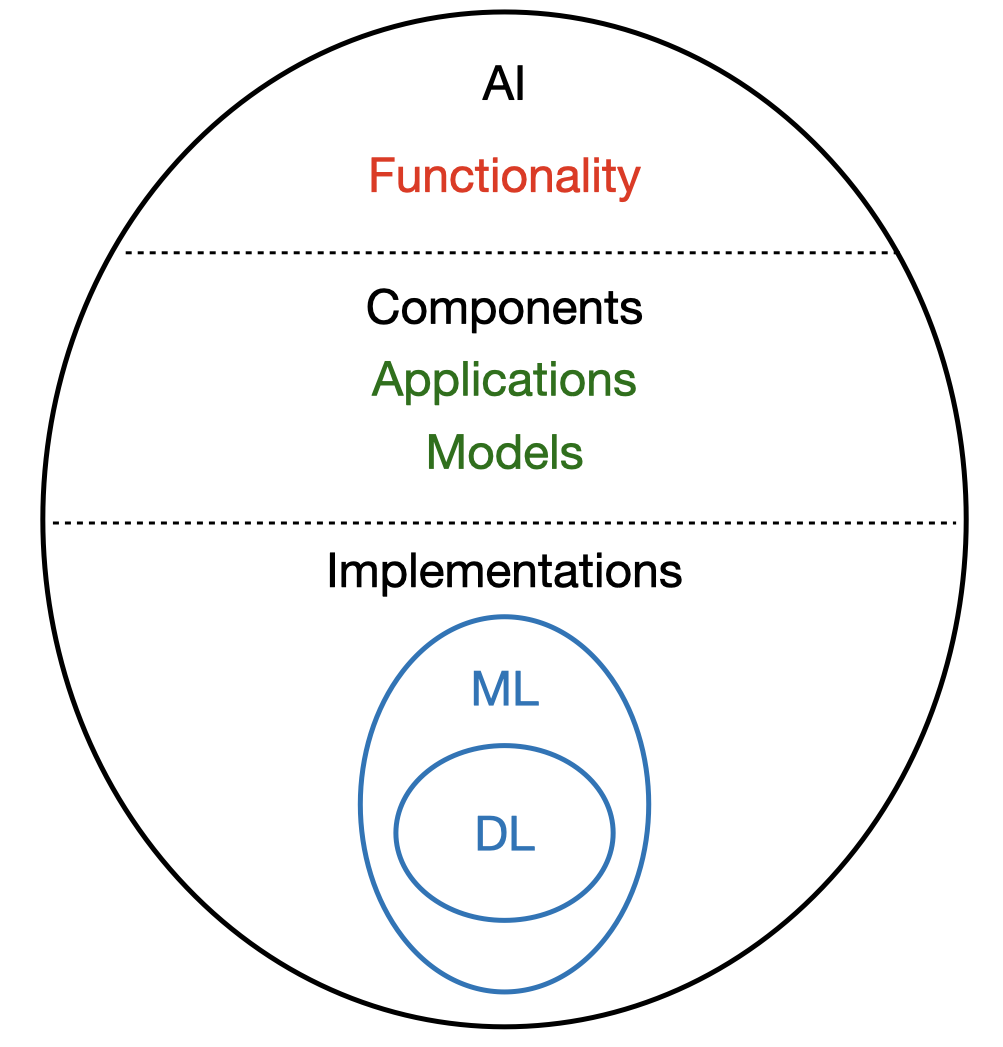Functionality and Implementation
In this topic, we will delve into more detail about some of the tools and techniques from machine learning and deep learning that underly advances in AI, but it seems worthwhile first to step back a bit and reconsider the relationship between these various endeavors.
It has been suggested by many that AI represents a set of endeavors that includes machine learning as a subset, with deep learning further being a subset of ML. Indeed, in our companion material on AI with Deep Learning, you will find our statement that: "Machine learning (ML) involves the use of algorithms that can learn about patterns and structure in data, without being specifically instructed about the details of those patterns. Machine Learning is a major component in the broad arena of Artificial Intelligence (AI), although there are aspects of AI that do not involve ML. Deep learning (DL) is generally considered to be a subfield of Machine Learning, in that it focuses more specifically on the use of Neural Networks ... to solve problems in ML."
This relationship is captured in the image below. In fact, if you do a Google search on "AI ML DL" and then click on the "Images" tab to get just the images returned as part of that search, you will find hundreds of examples of similar schematic representations of the relationship among these subjects.

The suggestion that ML (and thus DL) is a subset of AI is, as noted in the quotation above, often intended to convey the fact that there are aspects of AI that do not involve machine learning. Much early work in AI sought to create "expert systems" by faithfully encoding human knowledge and decision processes, rather than creating machines that might learn those things themselves. Other facets of AI, such as reasoning under uncertainty, develop frameworks for automated decision making, but not necessarily or exclusively through the use of ML approaches.
This conception of ML as a subset of AI implies in some sense that AI and ML are equivalent types of entities, but just different in their overall scope. Our previous discussion about what has changed recently in a world that is abuzz with AI suggests that this is not necessarily a useful or correct perspective. Fundamentally, it seems that AI is first and foremost a problem domain, while ML and DL are key algorithmic tools used to implement successful approaches to problems in that domain. As noted, much of the recent excitement about AI seems to be due to the fact that many AI applications have become available, particularly in the arena of generative AI, that do not require users to either understand the underlying implementation details or even to write code to take advantage of what those applications offer.
Rather than suggesting that AI, ML, and DL are like a set of nesting dolls that inhabit the same space, perhaps it is more useful to emphasize that AI is concerned with functionality (e.g., intelligence), whereas ML and DL are concerned with implementations of that functionality. Separating outward-facing functionality from inward-facing implementation has a long history in computer science, and forms the basis of many design strategies. This separation of concerns is not meant to suggest that implementation details don't matter. But it does suggest perhaps a new sort of diagram to represent the relationship among AI, ML, and DL, whereby the broader problem space of AI includes applications, models, and implementations, and the smaller and separate implementation space includes important components such as ML and DL.

CVW material development is supported by NSF OAC awards 1854828, 2321040, 2323116 (UT Austin) and 2005506 (Indiana University)